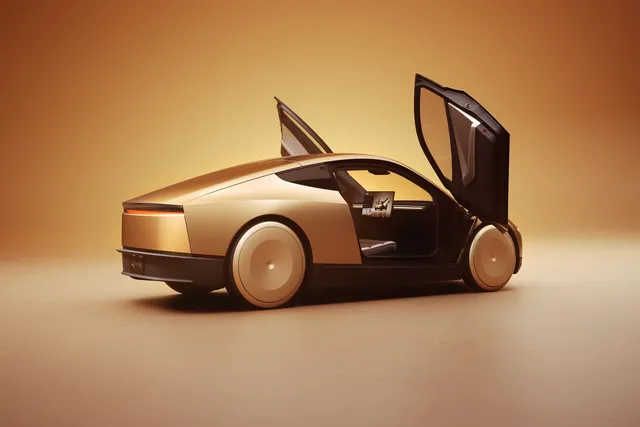Tesla Cybercab Robotaxi Revealed

What the Tesla Cybercab Means for the Future of Autonomous Vehicles
Tesla recently unveiled its new robotaxi, the Cybercab, at the Warner Bros Studios in Burbank, California. With a design that throws traditional driving controls like pedals and a steering wheel out the window, the futuristic two-seater was showcased by CEO Elon Musk as a vision of the next phase in Tesla’s strategy. Yet, despite Musk’s enthusiasm, the initial investor response could have been better, with Tesla shares falling by over 8% after the announcement. It reads as a lack of confidence in the ambitious timeline, the projected price of the Cybercab, and broader concerns about Tesla’s autonomous technology.
Cybercab: A Glimpse Into an Autonomous Future
The Cybercab is part of Musk’s long-term plan to lead the self-driving revolution. Set to cost under $30,000 and with production scheduled to start before 2027, the Cybercab aims to be a budget-friendly autonomous vehicle that could replace traditional taxis. According to Musk, owners of the Cybercab could earn income by allowing their cars to be rented out as autonomous ride-hailing vehicles when not in use.
Photograph: Tesla/Reuters
The launch event, titled “We, Robot,” highlighted the Cybercab’s unique features, which include a lack of conventional controls like a steering wheel, upward-swinging doors, and inductive charging capabilities. Tesla also claims that the Cybercab, once on the market, will offer one of the lowest per-mile costs for drivers at around 20 cents per mile. Musk sees autonomous vehicles like the Cybercab as a safer alternative to human-driven cars and anticipates regulatory approval to roll out fully autonomous technology in select US states as early as next year.
Plan Insurance can provide bespoke taxi insurance quotes for all UK drivers. Just fill in our short online questionnaire, and our professional brokers will be in contact to arrange your insurance.
A Rocky Reception from Investors and Analysts
While the event attracted considerable attention, investors did not appear entirely convinced. Tesla’s stock dropped significantly after the announcement, suggesting doubt over the Cybercab’s feasibility and potential profitability. This scepticism aligns with concerns raised by analysts who question whether Tesla can meet the targeted price without incurring losses on each vehicle sold. Paul Miller from Forrester commented that it would be challenging for Tesla to offer the Cybercab at this price point without subsidies, especially within the projected timeframe.
Musk’s history of ambitious deadlines that have not been met has made some stakeholders wary. The original reveal of the Cybercab was delayed from August to October due to design adjustments, underscoring the complexity involved in bringing this vehicle to market. These delays come as Tesla faces increasing competition from other players in the autonomous driving space, including Waymo and GM’s Cruise, both of which have robotaxi services on US roads.
Safety and Regulatory Hurdles Ahead
Another significant barrier to Cybercab’s success will be regulatory approval, as safety concerns around Tesla’s approach to autonomous technology continue to mount. Unlike many competitors that rely on LiDAR technology, Tesla favours a camera-based system. While cost-effective, this method has attracted criticism for potentially lacking the precision needed for safe, autonomous operation. A recent incident involving a pedestrian and a Cruise robotaxi has added to the safety debate. Tesla will likely face increased scrutiny as it pushes forward with its vision of unsupervised self-driving cars.
Musk assures he isn’t phased by these challenges, asserting that the Cybercab and Tesla’s full autonomy plans will ultimately save lives by preventing accidents caused by human error. However, it’s uncertain whether regulators and the broader public will share his optimism.
How China’s Robotaxis Are Outpacing Tesla’s Cybercab
While Tesla’s Cybercab is still in the prototype phase, China’s Baidu has already launched its own robotaxi service, Apollo Go, which operates in over ten Chinese cities and has logged more than 6 million rides since its 2022 debut. Thanks to heavy subsidies, Baidu has managed to make its rides extremely affordable, with a typical fare costing as little as $1.35. Although this pricing is unsustainable without subsidies, Baidu expects to break even soon, aiming for profitability by 2025. The company’s rapid expansion reflects China’s push to lead in autonomous technology, as local regulations and support have enabled Baidu to develop and deploy its robotaxis at scale
What’s Next for Tesla’s Autonomous Goals?
Despite the current hurdles, Tesla’s unveiling of the Cybercab marks a significant step in the company’s transition toward AI-driven services. With Tesla’s Optimus humanoid robot and the potential of the Dojo supercomputer in the pipeline, Musk has signalled that he is not just thinking about cars but about reshaping transportation and labour through robotics and automation. As for the Cybercab, the coming years will reveal if Tesla can meet its production goals and if the market is ready to embrace this new breed of autonomous vehicle.
Find out why 96% of our customers have rated us 4 stars or higher, by reading our reviews on Feefo.







